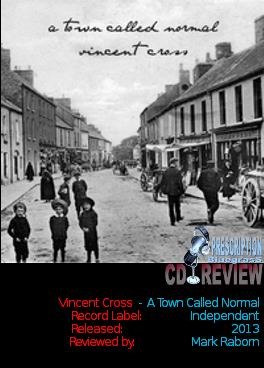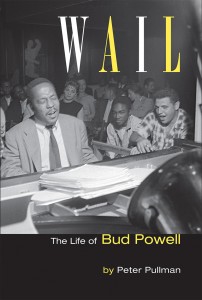News
 Almost everyone who listens to country music will not only recognize the song “Carolina,” but they will most likely be able to sing every word from the first note to the last. The song has been filling the airwaves of country music radio stations from coast to coast for several months now, and has climbed into the Top 5 on national charts. The song is by Parmalee, a new country group from North Carolina.
Almost everyone who listens to country music will not only recognize the song “Carolina,” but they will most likely be able to sing every word from the first note to the last. The song has been filling the airwaves of country music radio stations from coast to coast for several months now, and has climbed into the Top 5 on national charts. The song is by Parmalee, a new country group from North Carolina.
This isn’t the first time we’ve had Parmalee in the Top 40. The debut single for the group barely made it into the Top 40 back in 2012. The song was called “Musta Had A Good Time,” and I was actually surprised that it didn’t get up into at least the Top 20. That is especially surprising considering “Musta Had A Good Time” spent four straight weeks at No. 1 on SiriusXM The Highway’s fan-voted “Hot 30 Live” Countdown. The band has selected that fan-voted favorite the lead track on their debut album, “Feels Like Carolina”, set to release on December 10, 2013.
I listened to the review copy, and while I did like what I was hearing, I had a little trouble considering this ‘country’ music. I’m sure that is because my preference has always been real country music – the kind of music we now refer to as ‘classic country’ or ‘traditional country’ – the kind I still call just country.
“Close Your Eyes for This” sounds like much of what we are getting on today’s Top 40 stations. It is a good song. Probably one of my favorites on the entire CD. Of course, “Carolina” is among the 12 songs on this album, and I think it is the best one. For the most part, I don’t have anything bad to say about any of these songs. My only complaints are that the music really country, and it all sounds a lot like everything else that is on the radio today. The songs seem to lack originality.
Matt Thomas, lead singer for the group, had a hand in writing seven of the songs on the CD. And, he was teamed up with some of Nashville’s best writers. Bobby Pinson, Kyle Jacobs and Chris Janson are a few of my favorite writers, and you will find work by all of them on this new album. Preston Brust, half of the duo LoCash Cowboys, was one of the writers on “Back in the Day", and if it gets released as a single, I believe that one would be a hit for Parmalee. If I could pick for them, I would choose “Already Callin’ You Mine” to be their next single.
Parmalee is a family band comprised of brothers Matt and Scott Thomas (lead vocals/guitar and drums), cousin Barry Knox (bass), and life-long best friend Josh McSwain (guitar). They said their music was heavily influenced by musical heavyweights such as the Allman Brothers, Travis Tritt and Bob Seger. Their name is derived from the small town of Parmele, N.C., which has a population of 262, and is home to a small tin-roofed barn dubbed Studio B, where the band practiced on any given evening.
The songs you’ll hear on the new album are Musta Had a Good Time, Day Drinkin’, Move, Close Your Eyes For This, Dance, Carolina, Think You Oughta Know That, Back in the Day, My Montgomery, Already Calling You Mine, I’ll Bring the Music, and Another Day Gone.
For all the latest news about Parmalee, visit www.parmalee.com, and follow them on Twitter @parmalee. For all of your country music news and reviews, visit our web site at www.countryschatter.com, and follow us on Twitter @countryschatter.
A Music Charts Magazine - MusicChartsMagazine.com - Country Music Album Review by CountrysChatter.com ( Country's Chatter - Your #1 Pit Stop for Everything Country Music )
 These days the term “Bluegrass” encompasses a broad range of musical expressions. From the down home, gutsy realism of first-generation entertainers like Ralph Stanley, Bill Monroe and Flatt & Scruggs to the more refined sounds of Alison Krauss to the outer fringes of what is technically and musically possible and still retain some semblance of the core sound. It is indeed a broad genre that continues to give birth to new broods.
These days the term “Bluegrass” encompasses a broad range of musical expressions. From the down home, gutsy realism of first-generation entertainers like Ralph Stanley, Bill Monroe and Flatt & Scruggs to the more refined sounds of Alison Krauss to the outer fringes of what is technically and musically possible and still retain some semblance of the core sound. It is indeed a broad genre that continues to give birth to new broods.
All that said, “A Town Called Normal,” in my opinion, does not fit into any honest, objective interpretation of Bluegrass music. Does it have a banjo on most cuts? Yes. Is there a mandolin? Sometimes. However, those characteristics alone do not a bluegrass band make.
There is a ton of music here, but not an ounce of genuine Bluegrass. There is absolutely no “drive,” no cohesive “bounce,” no emphasis on the downbeats. Even to the most liberal Bluegrass listener, the vocals have the wrong feel. There are drums on several cuts and that certain “tightness” we’ve come to expect from better Bluegrass groups never comes into focus…it never even comes into view.
These things are not necessarily bad, however. There is some good music here, as well as some excellent writing and Vincent Cross is a fantastic vocalist. He has a talent for choosing material that is well-suited for his vocal range and he knows how to sing with passion. Pieces like “Sometimes” seem like they could easily fit into a Pop/Folk Top 40 scenario. The overall feel on this project is like Bob Dylan meets Jimmy Buffet meets banjo, except Cross has a better voice than either one. It makes me wonder why he chose to use banjo, mandolin, acoustic bass, resonator-guitar, etc. as the instrumentation backdrop for this material. Personally, I’m thinking a string-orchestral sound with lots of bows creating the tension and mood would help establish a more rich presence, along with the gravitas and ambiance to properly accentuate his voice.
To read this Bluegrass Album Review in it's entirety please click the below link and visit our friends at the Prescription Bluegrass website: http://prescriptionbluegrassreviews.blogspot.com/2013/05/prescription-bluegrass-cd-review.html
Music Charts Magazine Bluegrass Album Reviews are done by Prescription Bluegrass - www.prescriptionbluegrassblog.com - ( Your #1 Pit Stop for everything Bluegrass )
 "Love Is The Meaning Of Christmas" - A radio Christmas Special is here this December 2013 at www.MusicChartsMagazine.com.
"Love Is The Meaning Of Christmas" - A radio Christmas Special is here this December 2013 at www.MusicChartsMagazine.com.
About Fred’s Country program:
Le program Fred’s Country: La musique Country de Tradition avec Frederic (Fred) Moreau. Le program Fred’s Country est diffusé sur 65 fréquences FM, 54 radios ou webradios.
Radio Show Host: Fred Moreau
Program Fred’s Country w48-13 – 29 novembre 2013 à 15:25
Music Charts Magazine is proud to be friends with Mr. Moreau and glad to now be one of the many to host Program Fred’s Country. ( French/English)
 Department stores all over the country have already let us know it is not too early to start thinking about Christmas. For those of you who like listening to Christmas music sooner than the week of Christmas, the new holiday albums started coming out early in October. One of my favorite new albums comes to us from Gretchen Wilson, and is called “Christmas in My Heart”. While the album does contain the Christmas carol “Silent Night”, the other nine are Christmas songs, not traditional carols, and include the title track, “Christmas in My Heart,” “Santa, I’ve Been Naughty,” “Have Yourself a Merry Little Christmas,” “If You See Rudolph,” “Nuttin’ For Christmas,” “Have a Holly Jolly Christmas,” “Christmas Song,” “I Want a Hippopotamus for Christmas,” and “Blue Christmas”. Seriously, how can you not love an album with the ‘hippopotamus’ song on it!
Department stores all over the country have already let us know it is not too early to start thinking about Christmas. For those of you who like listening to Christmas music sooner than the week of Christmas, the new holiday albums started coming out early in October. One of my favorite new albums comes to us from Gretchen Wilson, and is called “Christmas in My Heart”. While the album does contain the Christmas carol “Silent Night”, the other nine are Christmas songs, not traditional carols, and include the title track, “Christmas in My Heart,” “Santa, I’ve Been Naughty,” “Have Yourself a Merry Little Christmas,” “If You See Rudolph,” “Nuttin’ For Christmas,” “Have a Holly Jolly Christmas,” “Christmas Song,” “I Want a Hippopotamus for Christmas,” and “Blue Christmas”. Seriously, how can you not love an album with the ‘hippopotamus’ song on it!
This is the first Christmas album from Gretchen, who introduced the world to her “Redneck Woman” side in 2004. It took a song like “Redneck Woman” for the country music world to notice Gretchen. However, that song did nothing to show us how talented she really is. “Redneck Woman” was a catchy tune with lyrics that seemed to please not only the folks in the south, but everyone who listened to country music, no matter where they lived. Since that time, Gretchen has released four studio albums, one live album, and two compilation albums (Greatest Hits and Playlist: the Very Best of Gretchen Wilson). The 20 singles she has released over the years were slow, fast and mid-tempo, and gave fans an opportunity to listen to her vocals, and discover she was far more talented than her performance of ‘Redneck Woman” might have led them to believe.
On the new album, she turns the Elvis hit, “Blue Christmas,” into a very bluesy number, and probably the only song on the CD that comes close to what could be called country music. “Christmas in My Heart “is the sweet song you might expect it to be with a title like that. She sings “Silent Night” the way it was written, and once again gives us an opportunity to hear that her vocals are not only powerful, but beautiful.
When you listen to her rendition of “The Christmas Song,” it will be very easy to close your eyes and picture the fireplace, over-stuffed furniture, a crowded room, and a very large piano. She does this entire number accompanied only by a piano, and this arrangement includes a nice piano solo in the middle. Mixed in with the traditional holiday tunes, you will find three original songs, written for Gretchen for inclusion in her first Christmas album. Those songs are “If You See Rudolph” written by Trent Willmon, Jenee Fleenor and Rob Byus, “Christmas in My Heart,” written by Greg Barnhill, and “Santa I’ve Been Naughty,” written by Rob Simbeck and Frank Michels. Check out Gretchen’s facebook page, and follow her on Twitter @gw27.
Later! Country
Music Charts Magazine Country Music Album Reviews by Country of www.CountrysChatter.com
| Album |
LW |
TW |
Artist Title (Label) |
TW SPINS |
LW SPINS |
Weeks on Chart |
Spin +/- |
Stations |
|
2 |
1 |
Kevin Fowler How Country Are Ya? (Kevin Fowler Records) |
1,333 |
1,248 |
11 |
+85 |
70 |
|
|
1 |
2 |
Wade Bowen Songs About Trucks (AMP/Sea Gayle) |
1,258 |
1,376 |
13 |
-118 |
69 |
|
|
3 |
3 |
Reckless Kelly The Last Goodbye (No Big Deal) |
1,192 |
1,198 |
17 |
-6 |
65 |
|
|
5 |
4 |
Jason Boland & the Stragglers Electric Bill (Proud Souls Ent.) |
1,146 |
1,108 |
11 |
+38 |
70 |
|
|
6 |
5 |
Randy Rogers Band Speak Of The Devil (MCA Nashville) |
1,012 |
1,092 |
12 |
-80 |
68 |
|
|
11 |
6 |
John David Kent Until We Turn Around (Blackland/Roustabout) |
946 |
955 |
17 |
-9 |
63 |
|
|
4 |
7 |
Kyle Park Fit For The King (Indie/Thirty Tigers) |
945 |
1,131 |
18 |
-186 |
63 |
|
|
15 |
8 |
Aaron Watson July in Cheyenne (Thirty Tigers) |
916 |
839 |
7 |
+77 |
62 |
|
|
13 |
9 |
Bart Crow Loving You’s a Crime (Smith Ent.) |
914 |
931 |
18 |
-17 |
64 |
|
|
7 |
10 |
Bri Bagwell Hound Dog (BB) |
912 |
1,020 |
20 |
-108 |
58 |
|
|
12 |
11 |
Turnpike Troubadours If You’re Gonna Play in Texas (Lightning Rod Records) |
900 |
936 |
11 |
-36 |
58 |
|
|
14 |
12 |
Josh Grider Smallest Town on Earth (AMP) |
892 |
873 |
8 |
+19 |
61 |
|
|
16 |
13 |
Granger Smith Miles and Mud Tires (GS) |
884 |
805 |
10 |
+79 |
63 |
|
|
9 |
14 |
Mark McKinney Stolen Cash (Texas Evolution) |
841 |
962 |
19 |
-121 |
56 |
|
|
18 |
15 |
Rich O’Toole I Love You (PTO Records) |
814 |
800 |
18 |
+14 |
52 |
|
|
19 |
16 |
Mario Flores Let Your Lonesome End With Me (MF) |
772 |
765 |
13 |
+7 |
48 |
|
|
8 |
17 |
Will Hoge Strong (WH) |
767 |
991 |
17 |
-224 |
52 |
|
|
22 |
18 |
The Statesboro Revue Huck Finn (Vision Ent./Shalley Records) |
735 |
679 |
11 |
+56 |
46 |
|
|
20 |
19 |
Casey Donahew Band Small Town Love (Almost Country) |
728 |
689 |
6 |
+39 |
57 |
|
|
24 |
20 |
William Clark Green Rose Queen (Bill Grease Records) |
714 |
634 |
7 |
+80 |
49 |
|
|
10 |
21 |
John Slaughter Hasn’t Everyone (Winding Road) |
621 |
960 |
18 |
-339 |
48 |
|
|
21 |
22 |
Josh Abbott Band She Will Be Free (Pretty Damn Tough Records) |
614 |
686 |
24 |
-72 |
46 |
|
|
23 |
23 |
Brandon Rhyder Pray The Night (Smith Ent.) |
557 |
645 |
13 |
-88 |
48 |
|
|
28 |
24 |
Curtis Grimes The Cowboy Kind (CG) |
555 |
503 |
5 |
+52 |
50 |
|
|
29 |
25 |
JB and the Moonshine Band w/Angaleena Presley Black and White (Average Joe’s) |
550 |
496 |
3 |
+54 |
52 |
|
|
17 |
26 |
Green River Ordinance It Ain’t Love (GRO) |
549 |
801 |
23 |
-252 |
44 |
|
|
30 |
27 |
Jake Kellen Jesus and Hank (Horny Toad Records) |
520 |
496 |
9 |
+24 |
42 |
|
|
27 |
28 |
Rankin Twins Jezebel (RT) |
504 |
513 |
14 |
-9 |
49 |
|
|
PHOTO COMING SOON |
36 |
29 |
Josh Ward Hard Whiskey (Buckshot Records) |
489 |
402 |
2 |
+87 |
41 |
|
34 |
30 |
Jason Cassidy Southern Side (JC) |
462 |
413 |
7 |
+49 |
45 |
|
|
31 |
31 |
Deryl Dodd Loveletters (Smith Ent.) |
459 |
467 |
12 |
-8 |
40 |
|
|
N |
32 |
Cody Johnson Dance Her Home (CJB) |
446 |
237 |
1 |
+209 |
41 |
|
|
25 |
33 |
Six Market Blvd. Mailbox (Vision Ent.) |
432 |
544 |
15 |
-112 |
39 |
|
|
33 |
34 |
Phil Hamilton Hold On Tight (Winding Road) |
426 |
430 |
4 |
-4 |
41 |
|
|
26 |
35 |
TJ Broscoff This is the Moment (BGM Records) |
418 |
531 |
16 |
-113 |
31 |
|
|
40 |
36 |
Jesse Raub, Jr. Bad Intentions (JRJ) |
415 |
388 |
4 |
+27 |
40 |
|
|
39 |
37 |
Charlie Robison Brand New Me (Thirty Tigers/Jetwell, Inc.) |
408 |
390 |
9 |
+18 |
39 |
|
|
42 |
38 |
Sam Riggs Angola’s Lament (SR) |
401 |
363 |
3 |
+38 |
39 |
|
|
43 |
39 |
Uncle Lucius Somewhere Else (Entertainment One Music) |
397 |
346 |
2 |
+51 |
40 |
|
|
38 |
40 |
Shane Smith & The Saints Coast (SSS) |
393 |
391 |
14 |
+2 |
37 |
|
|
41 |
41 |
Kris Gordon Triple on the Double (Frio Records) |
388 |
365 |
8 |
+23 |
37 |
|
|
37 |
42 |
Whiskey Myers Home (Wiggy Thump) |
381 |
399 |
6 |
-18 |
41 |
|
|
50 |
43 |
Brian Keane Bar Lights (BK) |
353 |
297 |
2 |
+56 |
38 |
|
|
PHOTO COMING SOON |
N |
44 |
Dirty River Boys Desert Wind (DRB) |
338 |
291 |
1 |
+47 |
35 |
|
48 |
45 |
Ray Johnston Band Crush (RJB) |
333 |
312 |
3 |
+21 |
37 |
|
|
46 |
46 |
The Dusty Smirl Band Mine For The Mile (TDSB) |
318 |
326 |
9 |
-8 |
36 |
|
|
45 |
47 |
Mark Allan Atwood One Horse (MAA) |
312 |
334 |
12 |
-22 |
29 |
|
|
44 |
48 |
Cameran Nelson Reckless in Texas (CN) |
304 |
334 |
9 |
-30 |
28 |
|
|
PHOTO COMING SOON |
N |
49 |
Bo Phillips Band Jonesin’ For George (BPB) |
282 |
278 |
1 |
+4 |
33 |
|
PHOTO COMING SOON |
N |
50 |
Rob Baird Same Damn Thing (RB) |
272 |
236 |
1 |
+36 |
30 |
Copyright © 2013, the Texas Music Chart. Used with permission from Best In Texas Music Marketing LLC, Houston, TX
 Date = 24 Nov 2013
Date = 24 Nov 2013
Author’s Name = Peter Pullman
Genre = Jazz
Title = Wail: The Life of Bud Powell
Publisher = Peter Pullman
Review=
Because Peter Pullman began researching Bud Powell in the early 1990s, he probably knows more about the pianist than anybody, including Guthrie P. Ramsey, Jr., whose recent The Amazing Bud Powell uses Powell primarily as a springboard for musing about genius and the social identity of bebop. Pullman’s knowledge is confirmed by his study of the pianist, an almost 500-page book published in 2012 at the author’s expense. For it, Pullman conducted approximately 800 interviews, listened to all of Powell’s recordings, and consulted seemingly everything relating to his subject. After assimilating this information, he wrote a balanced biography that details highlights as well as unpleasantnesses, of which there were many. He treats his subject’s youth, professional associations, recordings, performances, involvement with women (mostly platonic), alcoholism, occasional heroin use, musical decline, revered status in France, and more. Though Pullman is given to overstatement, a measured tone enhances his narrative, as may be observed when he details the two known times that Powell struck his mother (210, 223). He does so dispassionately, refusing to milk the events for pathos, as some writers might have done.
A schooled pianist influenced by the likes of Bach, Ravel, and Art Tatum, Powell (1924-1966) joined the band of his brother William in 1940, played in his native Harlem at Minton’s Play House and Monroe’s Uptown House when bebop was being developed there, and joined the Sunset Royals before entering the big time with Cootie Williams in 1942. Also with Williams irregularly during this period was Charlie Parker, whose new approach to music Powell embraced. His life changed in 1945, when he was reportedly beaten by police after being arrested for drunkenness. The resulting headaches and strange behavior led to hospitalization and to a diagnosis of manic depressive psychosis. Thus began serious emotional problems that lasted for the remainder of his life.
Yet off and on for approximately a decade beginning in 1947, Powell led impressive trio sessions for such labels as Roost, Clef/Norgran/Verve, Blue Note, Debut, and RCA. His bassists included Ray Brown, Paul Chambers, George Duvivier, Percy Heath, and Curly Russell; Art Blakey, Kenny Clarke, Roy Haynes, Buddy Rich, and Max Roach were among his drummers. An album of Powell’s solo performances was recorded in 1951. Powell’s reputation rests primarily on music from these sessions. From the beginning of his career, however, leaders recognized the pianist’s ability, as the many impressive recordings on which he appeared as sideman illustrate. These include Cootie Williams’s “Round Midnight” (1944), Dexter Gordon’s “Long Tall Dexter” (1945), Sarah Vaughan’s “If You Could See Me Now” (1946), J. J. Johnson’s “Jay Bird” (1946), Fats Navarro’s “Boppin’ a Riff” (1946), Charlie Parker’s “Donna Lee” (1947), Sonny Stitt’s “All God’s Chillun Got Rhythm” (1949), Quintet of the Year’s “Wee” (1953), Coleman Hawkins’s “All the Things You Are” (1960), Oscar Pettiford’s “Blues in the Closet” (1960), Charles Mingus’s “I’ll Remember April” (1960), Don Byas’s “I Remember Clifford” (1963), and Dizzy Gillespie’s “Groovin’ High” (1963). Among the most significant musicians in jazz history, these leaders could have used any available pianist they desired, but they chose Powell. Why? Because of his inventiveness and his expressive, intense style, qualities that made him the preeminent bebop pianist and make his most accomplished music enduring. Still, his recordings and live performances were hardly consistent, and his life was erratic. In Wail, Pullman provides all the details of Powell’s life and career that most people would wish to know, but is most impressive and valuable when discussing the problems that led to the pianist’s decline--mainly his emotional problems, which led to hospitalizations. Pullman had access to medical records, some willingly provided by institutions, but others relinquished only after he won the suit he filed against the New York State Office of Mental Health in the New York Supreme Court. As a result, he bases his comments on the best possible evidence.
That Powell was emotionally unstable is not news; fortunately, Pullman provides many details about this instability that were not previously known. From the medical records he learned, for example, about the pianist’s difficulty with what psychiatrists call ideas of reference (considering ordinary events as of great personal significance). In 1947, drinking exacerbated this problem to the degree that in a club Powell fought a patron over the issue of race, an action that led to his confinement in the state hospital in Creedmoor, NY. Because of his disruptive behavior while still there the next year, he was forced to wear a straightjacket; then, he underwent two series of electroconvulsive therapy (shock treatments). On the topic of the pianist’s emotional state, Pullman notes that Powell was predisposed to a nervous breakdown; he also believes that Powell was disserved by judges who committed him to psychiatric hospitals and that the pianist received inadequate screening during the admission processes. I find his treatment of Powell’s emotional problems sound (I am neither a psychiatrist nor a mental health professional), though I wonder if some of his judgments of medical personnel are too harsh.
Powell’s greatest recordings (including “All God’s Chillun Got Rhythm,” “Parisian Thoroughfare,” and “Un Poco Loco”) rank with the best work of any jazz pianist, which makes Powell’s artistic decline all the sadder. Pullman notes that it began in 1953, the year Powell performed at Massey Hall in Toronto with his trio and with a quintet featuring Charlie Parker and Dizzy Gillespie. (Pullman believes that Powell’s solo on “Salt Peanuts” with the quintet “ranks with his greatest, regardless of context” [185]). The author identifies strong and weak performances from then until the end of the pianist’s career. At his last recording session, as leader in January 1966, Powell played so poorly that Pullman concludes that none of the music “should have been considered for release,” though the session was released, on Mainstream. He further states that the music on this album constitutes Powell’s “last, embarrassing attempt . . . to make music” (376). While I agree, to this statement I would add “sad” between the first two words.
As an examination of Powell’s life—professional and personal--Wail will probably never be surpassed, which is not to say it is perfect. (What is?) Pullman makes claims he cannot support (“Powell gave his performances every drop of sweat that he had” [150]); treats George Shearing contemptuously (152, 183); states what people thought when he has no way of knowing (“Powell had to be thinking of the long, lonely voyage back to New York” [208]); criticizes Powell’s fan Evelyn Glidden gratuitously (237); dismisses people with a single unflattering adjective (“the pedantic Kurt Mohr” [290], “the bourgeois Paudras” [337]); fails to define terms (October Revolution [358, 372]); and treats Leonard Feather’s Blindfold Test unfairly (382). He also seems credulous, as when believing that Thelonious Monk cried because of his supposed pianistic inferiority to Powell (303) and that Powell recited the Gettysburg Address from memory when asked to do so (420). In all likelihood, a copy-editor would have challenged Pullman on some of these points and made stylistic suggestions, such as eliminating “, though,” in most instances. Granted, Pullman published the book himself, so the cost of engaging a copy-editor for his long manuscript probably would have been prohibitive. Ultimately, these and other infelicities are relatively insignificant in the context of the book’s strengths, especially its comprehensiveness and detail.
Had Powell not been a gifted person, his life would hardly warrant comment. Yet because he was an accomplished pianist, it assumes importance. Thus, Pullman’s book is well worth reading by anyone interested in jazz, the creative process, or emotionally impaired artists. Though one would gain a full sense of Powell from it, it might best be read in conjunction with listening to his recordings, most of which are readily available. (A Powell discography would have enhanced the book.) Doing so would permit one to hear his greatness (and not-so-greatness) and understand why Pullman evaluates the pianist’s artistry as he does.
Author=Benjamin Franklin V
About Fred's Country program:
Le program Fred's Country: La musique Country de Tradition avec Frederic (Fred) Moreau. Le program Fred's Country est diffusé sur 65 fréquences FM, 54 radios ou webradios.
Radio Show Host: Fred Moreau
Program Fred's Country w47-13 - 22 novembre 2013 à 15:25
Music Charts Magazine is proud to be friends with Mr. Moreau and glad to now be one of the many to host Program Fred's Country. ( French/English)

George Strait Live - Photo credit - Jill Trunnell

